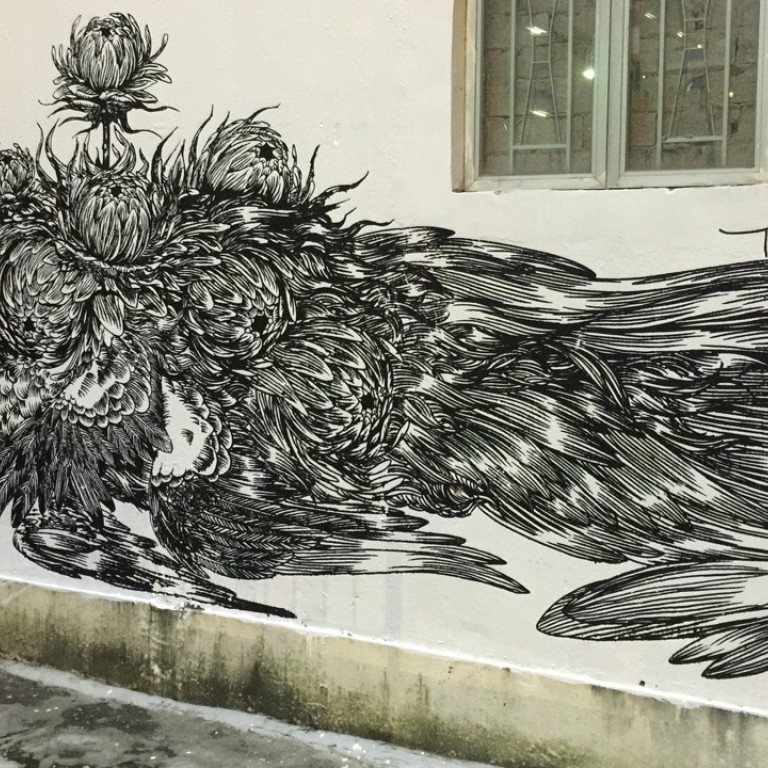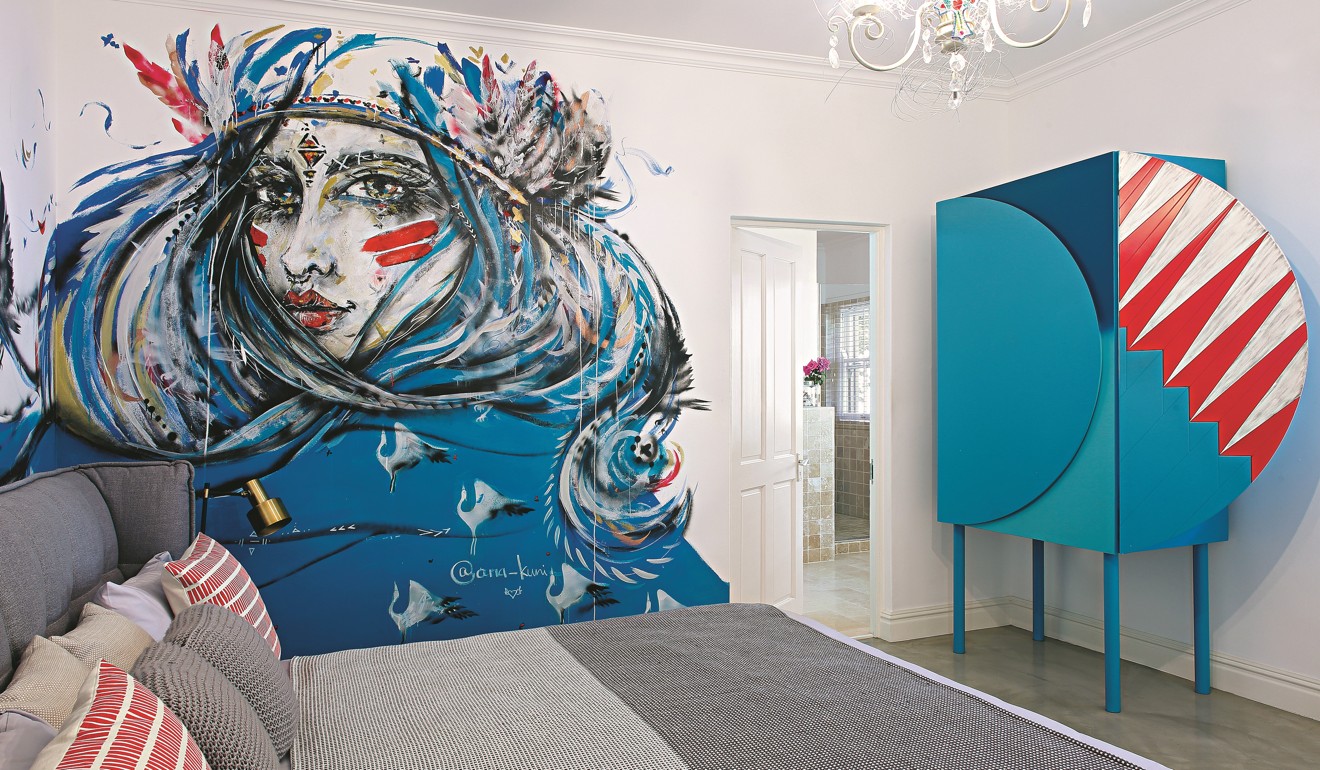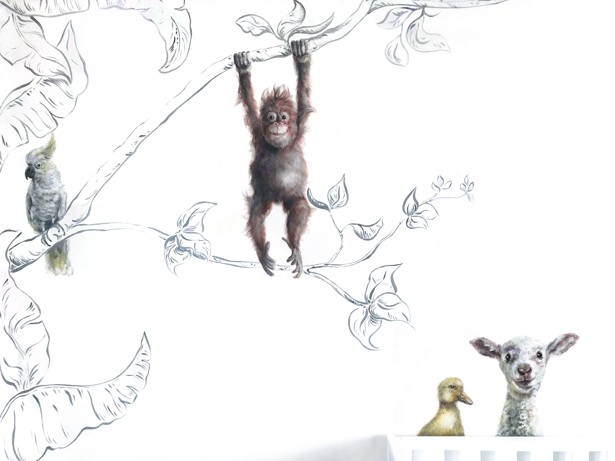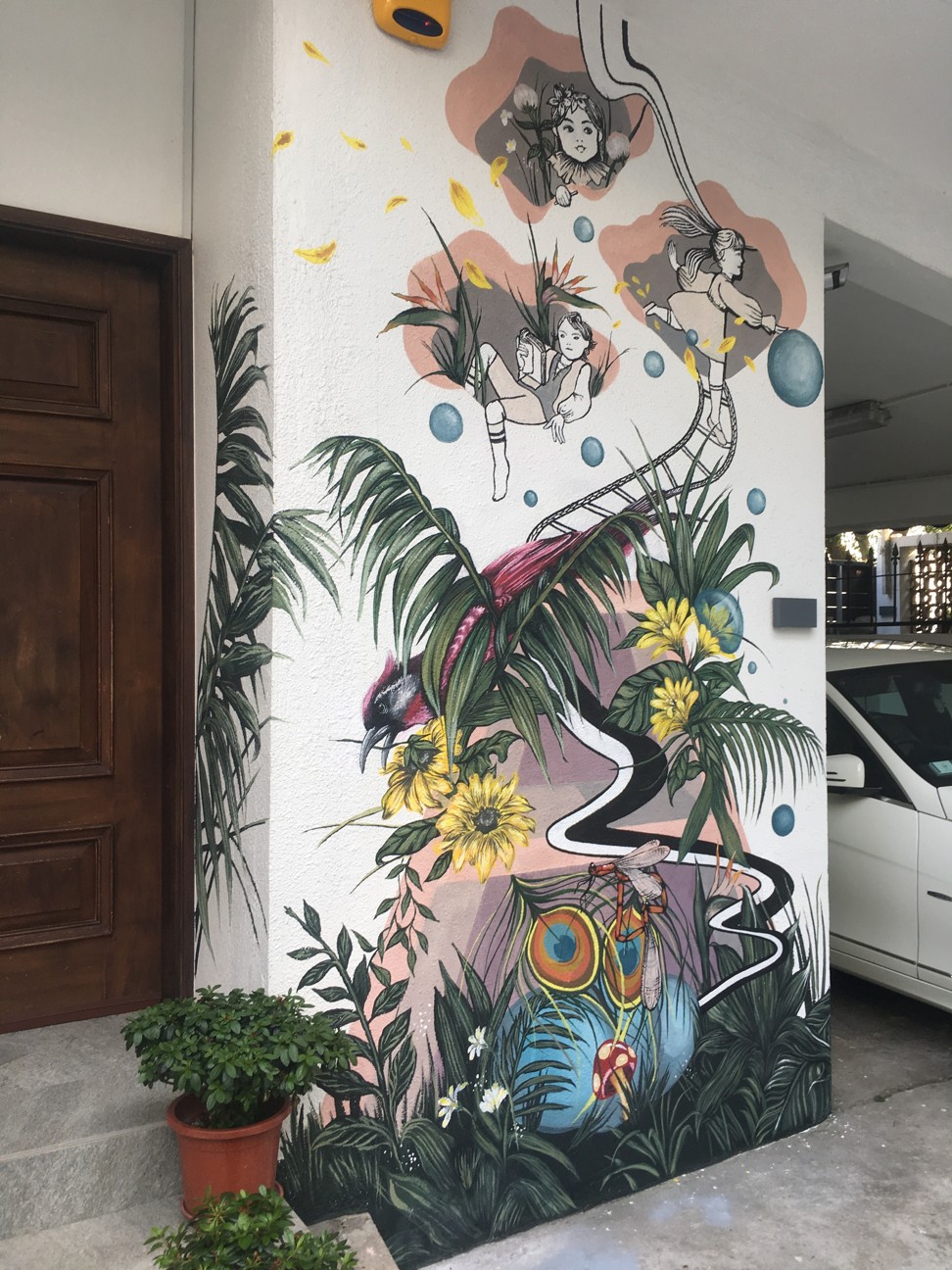
Street art moves indoors as designers, home makers use graffiti and murals to make walls, furniture pop
- Residential street art brings an unexpected edge to a home, as a full wall mural or a small creative statement
- Artists want the flexibility to be creative
Street artists are increasingly moving into homes to paint their sweeping murals: a sprawling statement wall in the living room, a poolside art piece enjoyed from the patio, even furniture emblazoned with graffiti.
Anji Connell is a Hong Kong-based interior designer who was so taken by the murals she commissioned two street artists to create in her South Africa home that she is now including hand-painted graffiti furniture in a residential project for a Hong Kong client.
Why graffiti has never taken off in oh-so-law-abiding Hong Kong
“Street art, or ‘refined graffiti’, brings something unexpected, an edgy cool, to a home, whether it’s in the form of a full wall mural or a small art statement, tag or graffiti-adorned piece of furniture,” she says. “It’s an excellent conversation starter.”
Connell allowed the artists she picked in South Africa to have complete freedom on her walls.
“I had no brief,” she says. “I wanted the artists to express their own creativity. Even the location was open.”
Visual artist Ana Kuni created a sweeping, wild warrior girl in one of Connell’s bedrooms, while urban artist Wayne Bks painted a graphic, colourful work on an exterior wall near the swimming pool. “Both artists have their own style, and this is the reason I commissioned them,” she says.

However, while Connell had the confidence to give free reign to her artists, few in Hong Kong seem so bold, and residential commissions rarely allow the artists to truly express their individual style.
“I have a lot of clients who are choosing me because of my creativity, my ideas, my style, but most of the time they know exactly what they want … they show me a picture and ask me to do something similar,” says street artist Elsa Jean de Dieu, whose work decorates streets from Central to Sai Ying Pun and features in a number of commercial spaces. These include Pure Yoga studios, and restaurants such as John Anthony in Causeway Bay and Feather & Bone in Happy Valley.
It is early days for residential interior murals in Hong Kong, and for many the city may not be an obvious choice. Interior spaces are often small, and unless you own your home, moving can be frequent. A mural is also hard to take with you, which is perhaps why the art form has largely stayed where it started – on the streets.

Yet the medium holds appeal, as recent commissions show. Murals on the walls of children’s bedrooms are proving popular, and Jean de Dieu and illustrator and muralist Assia Bennani have realised a number of whimsical, playful paintings (animal murals start from HK$3,500 at elsajeandedieu.com).
Jean de Dieu is better known for her large smiling faces, one of which appears in the Uma Nota restaurant in Central. Others grace exterior walls across Hong Kong. She hopes one day to take this kind of work into homes.
“I’m building my style and hopefully people will give me more freedom because they’ve seen my work previously and they know what I’m capable of achieving,” she says. “Hong Kong is still new in terms of murals, but slowly we are changing people’s mentality.”

Gustav Szabo, who goes by the artist name Szabotage, often takes his street art indoors while maintaining his style. His work, typically stencilled, colourful and incorporating his signature koi fish motif, can be found outdoors in Sheung Wan, Sai Ying Pun and Sai Kung. When indoors, it tends to feature in transitional zones or in entertainment spaces to create a wow factor in areas most visible to guests.
Street artist Neil Wang has created murals of jungle flora and tropical birds at the Pizza Express restaurant in Wan Chai and of a woman set against the night sky raising a glass of champagne at the Sparkling House restaurant in Kowloon Bay.
He was recently commissioned to depict a client’s three children and various elements related to the family’s life on an exterior wall of a private Kowloon Peak residence. The work subtly incorporated symbols of their favourite football team and the church they attend, and was wrapped up in one of Wang’s nature-inspired urban jungles.

It took several weeks to refine the design – with sketches going back and forth between client and artist before painting started – but that is to be expected for a work designed to last.
“When I work on a mural for a restaurant they often have a strong concept or idea that they want me to develop,” Wang says. “I can take those and add my own concepts. But for residential work, often there is no concept and it’s challenging.”
For Szabo, the challenge is what he loves. “I feel it really pushes you to respond to a brief. It starts introducing new elements into your work as well, so it just feels that I take on board another skill set.”
Szabo’s process involves extracting visual references from the client and working through designs on paper before presenting a digital mock-up of the room with the artwork in place. This way clients can have a real feel for how the final piece will look in their home.
[The main reason] I haven’t really done much residential muralling is that there is no room for me to create. Every artist wants to have the freedom to explore something
When choosing an artist, it is important for clients to do their due diligence.
“Nowadays there are more people doing [street art and murals] and it’s definitely more vibrant, more exciting, but the quality can vary significantly,” warns Kristopher Ho, an illustrator and street artist whose intricate black-and-white works have graced the walls of Accenture, Facebook and WeWork offices in Hong Kong.
He adds that less experienced street artists may not have developed the necessary techniques and finishes to create high-quality murals.
Ho has extensive commercial experience and is regularly commissioned for his distinctive style, which has developed over several years. But he has not done much residential work.
“[The main reason] I haven’t really done much residential muralling is that there is no room for me to create,” he says. “Every artist wants to have the freedom to explore something.”

Ho was given free rein for an outdoor mural at a North Point home, which appealed to him. Titled Transcendence, the mural depicts a dead bird yet features the promise of new life, representing the endless cycle of death and rebirth.
“Obviously you have to like what I do,” Ho says. “But you get to have something you appreciate and I get to have something I appreciate, so it’s a win-win situation.”
If letting an artist loose on your home is daunting, there are other ways to achieve the mural effect. Wallpaper creators Feathr recently teamed up with street artist Lee Herring to make wallpaper that combines the graffiti artist’s distinctive floral, textural work with its street art motifs (Feathr x Lee Herring, from €59 (US$67) per square metre, feathr.com).
Tom Puukko, founder of Feathr, says residential street art is not just about an artist painting a complex mural. It is about finding the artist, briefing them, and agreeing on decisions about the look.
“We do that work for the customer,” he says. “We source the artists and we curate the work really carefully. We don’t just take the art straight from the canvas to the wall – we think about how it will work at scale and what colours are going to fit the interior design trends of the moment.”
These Beijing street artists are taking graffiti in China to the next level
The result often fools people into thinking the wallpaper is a real painting. “Often people will see a piece and will ask whether we painted it on the wall. It’s only when they get closer that they realise it’s actually wallpaper. Capturing that is part of the investment we put into each artist to make sure their work is represented close to their original vision.”
For Hongkongers who like commissioning art, the destination must be clear, but how the artist gets there should be part of the enjoyment. As Connell says: “Just go with it and have fun.”

